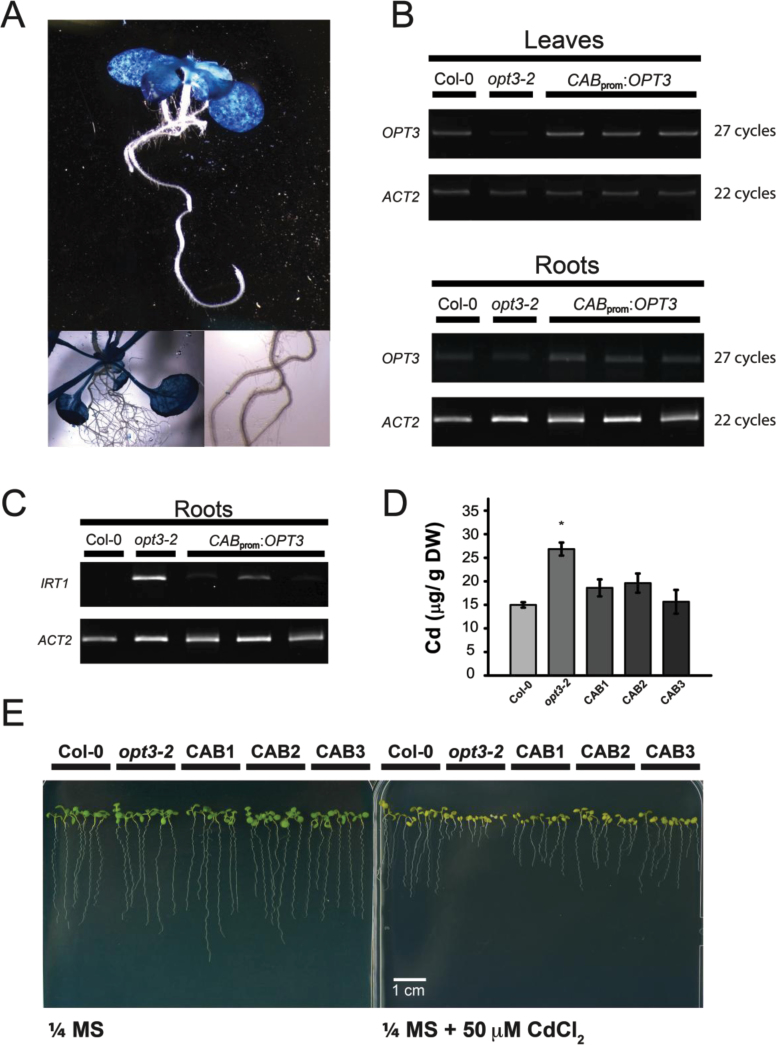Figure 6.
Shoot-Specific Expression of OPT3 Is Sufficient to Complement the Fe-Deficiency Response in opt3-2 Roots.
(A) CAB2 pro is preferentially active in shoots and is not active in roots. GUS staining in a whole seedling expressing CAB2 pro:GUS is evident only in shoots.
(B) RT–PCR confirmed the shoot specificity of CAB2 pro:OPT3. Wild-type, opt3-2, and three independent CAB2 pro:OPT3 lines were grown vertically on ¼ MS plates for 2 weeks, and cDNA was prepared separately from root and leaf RNA. OPT3 expression was determined in roots and shoots of wild-type, opt3-2, and three independent CAB2 pro:OPT3 lines. ACT2 was used a loading control, and the number of PCR cycles is shown to the right of each gel image. Note that complete knockout of OPT3 causes embryo lethality (Stacey et al., 2002), and opt3-2 shows reduced expression of OPT3 transcript.
(C) CAB2 pro:OPT3 successfully restores regulation of IRT1 in opt3-2. IRT1 expression in roots of wild-type, opt3-2, and CAB2 pro:OPT3 was determined by RT–PCR as in panel (A). RT–PCR was performed for 22 cycles, and ACT2 was used as a loading control.
(D) opt3-2 plants expressing CAB2 pro:OPT3 accumulate wild-type levels of Cd in seeds. Wild-type, opt3-2, and three CAB2 pro:OPT3 lines were grown on heavy metal-laden soil, and their seed metal concentration was determined by ICP–OES as in Figure 1. Data represent mean ± SE (n = 6; * p < 0.05).
(E) CAB2 pro:OPT3 complements seedling sensitivity to Cd in opt3-2. Wild-type, opt3-2, and three CAB2 pro:OPT3 lines were grown on ¼ MS with or without 50 μM CdCl2 for 2 weeks.

